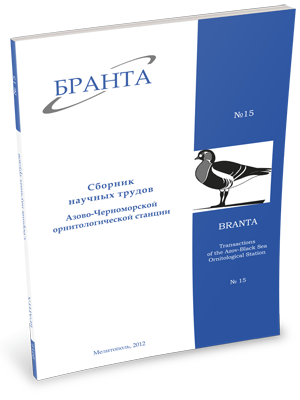
Transactions
of the Azov-Black Sea Ornithological Station



Nesting characteristics of the Spotted Flycatcher (Muscicapa striata Pallas.) in a recreation zone of the National Natural Park “Homilshanski Forests”.
A. B. Chaplygina, N. O. Savynska.
A synanthropic population of the Spotted Flycatcher was studied in a recreation zone of NPP “Homilshanski Forests” (Kharkiv Region). It prefers anthropogenic constructions for nest building. 78.2% of the Spotted Flycatcher’s nests were registered on 9 kinds of artificial substrate. The change of nesting pattern is caused by availability of artificial nestboxes which are suitable to locate nests and save much time and efforts of birds at the stage of nest-building. Their long run of exploitation and high level of thermoinsulation shift nest-building to earlier dates which allows repeated breeding for some pairs of the Spotted Flycatcher and, therefore, increase their fertility.
It was recorded a reliable increase of nest location height from 1.8+0.35 m (0.5-2.7) on natural substrate to 3.5+0.15 m (1.6-4.0 m) on anthropogenic substrates, and reduction of the distance when the frightened bird flies off from 1.5 to 0.3 m in transformed areas. It was registered high breeding success of the species – 85%.
Read the paper in a PDF file